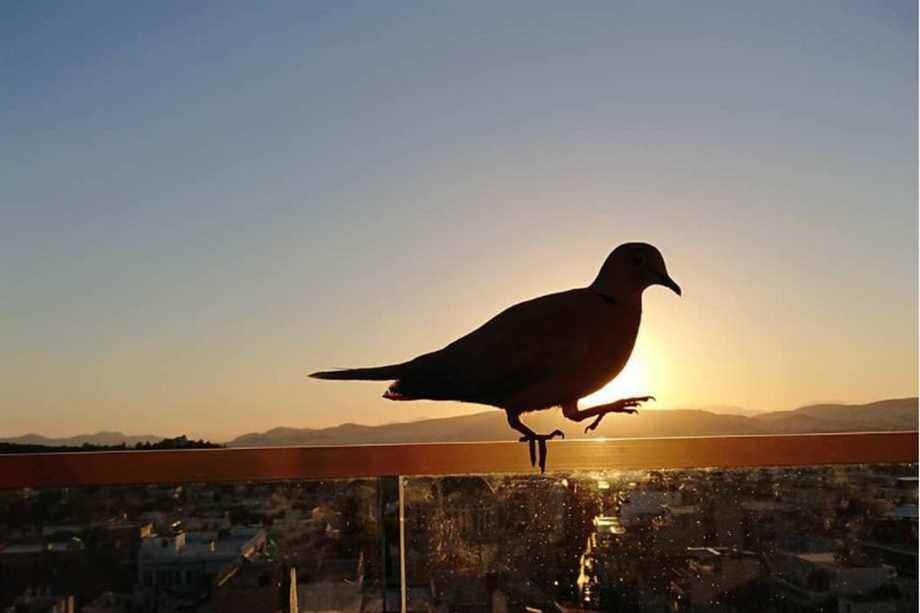On January 29 and 30, the LPO organizes a national count of garden birds. This operation, within everyone’s reach, aims to observe whether the birds always behave in the same way from year to year.
Do you have the soul of an ornithologist? Or do you just enjoy spending time outdoors, even in January? The League for the Protection of Birds offers you an activity for the weekend of Saturday 29 and Sunday 30 January. For an hour, everyone can observe the birds passing by in their garden or on their balcony.
The LPO recommends starting observation in the late morning or early afternoon because the birds are more active when the temperature is milder. Once installed in a garden, private or public, or on a balcony or terrace, the objective is to count and record the birds that have landed.
The LPO gives a trick to avoid counting twice the same bird: ultimately keep only the maximum number of birds of the same species observed at the same time.
This allows people to realize that there are not only pigeons and sparrows in their parks.
Marjorie Poitevin, program manager
In the PACA region, there are many blackcaps. “It is usually present everywhere in France but in winter, individuals from the North migrate to Africa while those from the South stay where they are”, deciphers Marjorie Poitevin, program manager at the LPO.
Be careful not to misunderstand, if the male has a black head, the female will have a brown cap.
At the top of the ranking for the region, we see that, as in the rest of France, the most common birds are the robin, the great tit and the blue tit.
Marjorie Poitevin indicates that this year, it will be necessary to keep an eye out to see if we can see the finches of the North, a species “in high abundance compared to previous years”. This bird which comes from the North of Europe comes to spend the winter in France.
The specialist admits that it is “always difficult to find a sure reason” to explain a stronger presence from one year to the next. She hypothesizes a massive breeding last spring which would have led to a lack of food resources and therefore created an influx of individuals of northern finches migrating south to find food.
It will also be possible to observe birds that would, in theory, have no business there.
This is the case of lead-billed capuchins and ring-necked parakeets. Capuchins are birds from Asia. Twenty years ago, some individuals would have escaped from an aviary near Nice and since then they have continued to twirl on the Côte d’Azur.
For parakeets, it is once again difficult to give a reason for their local presence but Marjorie Poitevin indicates that their presence is observed everywhere in France, especially since a first group of people escaped at Roissy airport. , near Paris, a few years ago.
If they are very fun to watch – their green and orange dress clashes with other species – the LPO has not yet determined what their impact was on the rest of the local fauna.
A priori, according to Marjorie Poitevin, his presence could not be only positive:
“The parakeet nests a little earlier than the local species so it will occupy tree cavities earlier. As a result, some local species have trouble finding where to nest and the parakeets are quite virulent, almost violent.”
Of course, there are also seagulls and gulls in PACA, but the specialist clearly indicates that it is necessary to note only the birds which land in the garden or the park and not those which fly.
At the end of the hour of observation, the results must be sent to a website co-administered by the LPO and the Museum of Natural History.
It can be a moment of zen relaxation or the opportunity to do an activity with the children, always willing to make this kind of discovery.
This initiative was launched in 2013 and is increasingly popular with the public. Last year, nearly 40,000 people took part in the count. Some regions seem more ready to participate than others. The PACA region is not the most active…
While there were more than 800 participants in the Channel and more than 500 in the North in 2021, the Var counted only 150 and the Alpes-Maritimes 90… The LPO hopes to do better in 2022.
This year represents the tenth count. Thus, the LPO plans to make a detailed analysis of the results for 10 years in the fall.
It is one of the biggest participatory science projects in France.
The LPO can receive observations and counts of birds all year round on its site dedicated to garden birds. And if it is impossible for you to recognize the species of the bird, you can send a photo to the following email address: [email protected].



